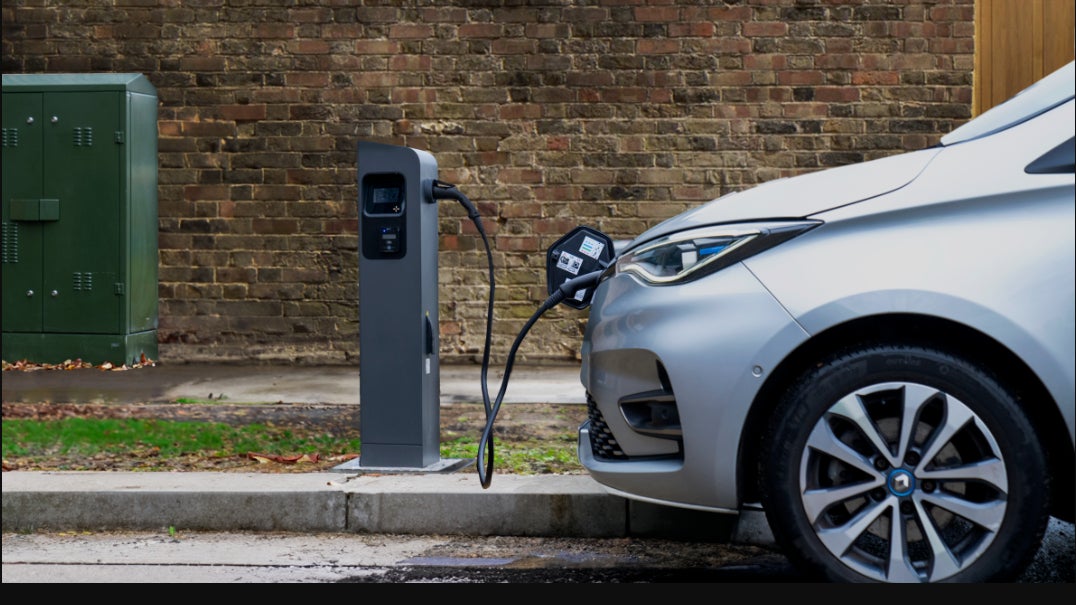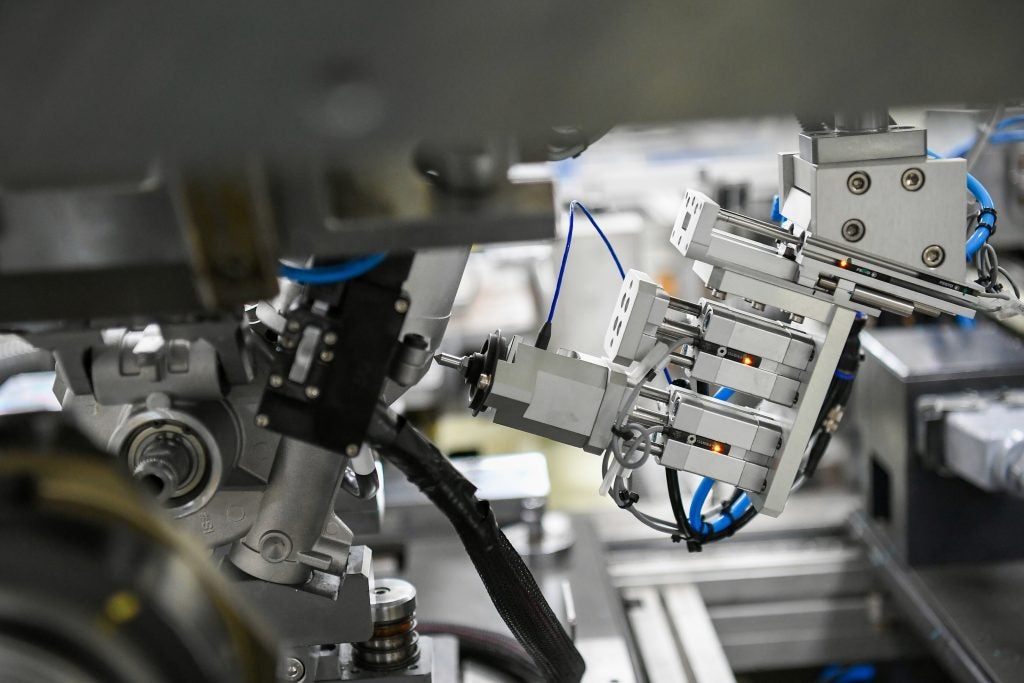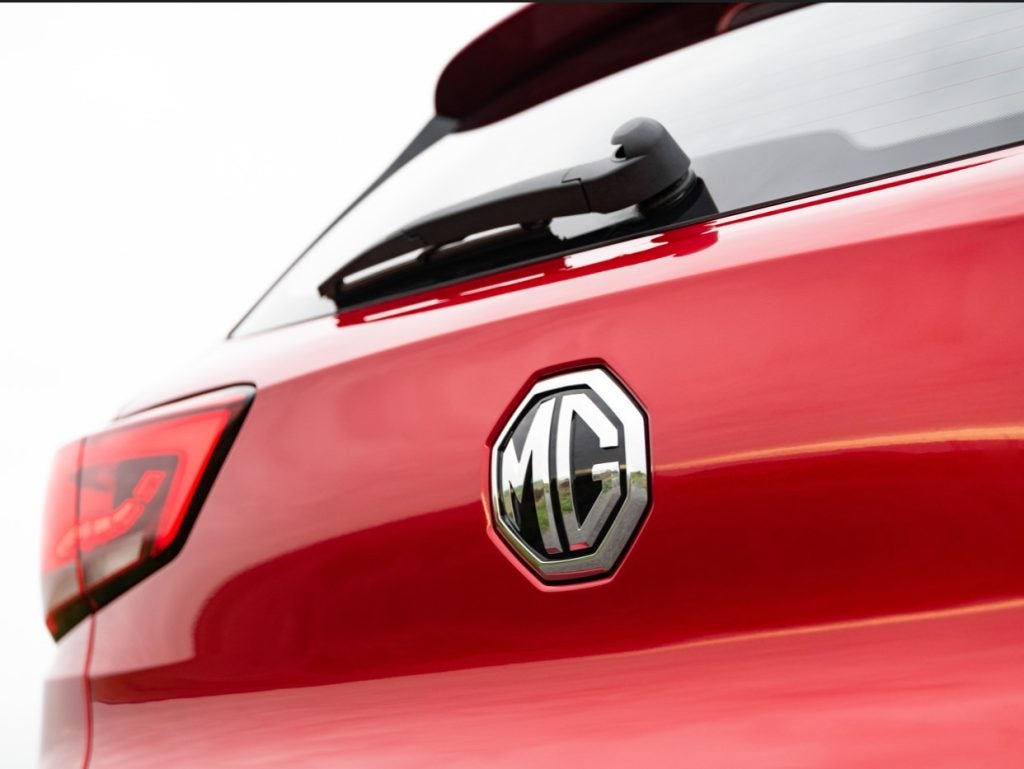
A scheme by UK telecoms giant BT Group that will see near-end-of-life green street telecoms cabinets converted to become electric vehicle (EV) charging points could have a significant impact on the country’s rollout of the infrastructure as a whole but is unlikely to deliver much-needed fast chargers.
The initiative, announced on Monday (8 January) and run by BT’s startup and digital incubation arm Etc., could see up to 60,000 cabinets repurposed for use in this way.
That figure is more than the current 53,000 public EV charge points in 31,000 locations currently installed across the UK’s road network, according to EV charging map Zapmap, and, if achieved, could represent a large portion of the 300,000 the government is targeting by 2030. It would also help to supplement the more than 680,000 charging points Zapmap estimates are installed at private locations such as homes and workplaces.
The need to adequately roll out charging infrastructure in the UK – across the road network in particular – is pressing. GlobalData analysis indicates that there are now nearly a million battery electric vehicles (BEVs) on the road in the UK, with the figure expected to rise to around 1.9 million by the end of 2025 and around 7.8 million by 2030.

The 2023 edition of GlobalData’s Electric Vehicles report indicates that, more broadly, there were 18.9 million BEVs on the road globally by the end of 2022 up from just 850,000 in 2015. The figure is expected to hit 58 million by 2025, by which time an estimated 17.3 million will be being produced annually.
Of the BT scheme, Tom Guy, Managing Director for Etc. at BT, said: “Our new charging solution is a huge step in bringing EV charging kerbside and exploring how we can address key barriers customers are currently facing.”
How well do you really know your competitors?
Access the most comprehensive Company Profiles on the market, powered by GlobalData. Save hours of research. Gain competitive edge.

Thank you!
Your download email will arrive shortly
Not ready to buy yet? Download a free sample
We are confident about the unique quality of our Company Profiles. However, we want you to make the most beneficial decision for your business, so we offer a free sample that you can download by submitting the below form
By GlobalDataIts potential benefits are echoed by Alastair Bedwell, Director of Global Powertrain Research and Analysis at GlobalData, who commented: “It seems like a good way of expanding the ‘standard’ (i.e. not fast) charger network, so will be useful for overnight charging in places that lack facilities at the moment. The urban locations fit with the need for that among people who cannot charge off-road due to lack of a driveway or garage.”
Need for fast EV charging
However, although the scheme could be broadly beneficial, it is unlikely to address the area that is most needed to help catalyze the uptake of EVs in the UK. Slower ‘destination’ chargers at homes, workplaces and other long-stay locations will reshape how drivers ‘refuel’. As drivers switch from internal combustion engine vehicles, there will be less of a need for petrol stations due to the use of distributed destination charging.
Fast charging for quick turnarounds on long journeys will still be required on the road network, though, and, of this, Bedwell notes that “only 15% of public chargers are fast DC type”, adding: “That needs to be a lot higher to enable hassle-free longer journeys by BEV.”
The BT initiative is unlikely to help in that respect, given that the location of its telecoms cabinets typically in residential areas.
The UK government put the number of petrol stations in England and Wales at around 7,000 in 2022. Zapmap, meanwhile, notes that: “As of December 2023, there are 10,497 rapid and ultra-rapid charging devices, across 5,179 rapid and ultra-rapid charging locations in the UK.” It adds: “While rapid and ultra-rapid chargers only make up around 20% of total devices, they account for around 60% of the total capacity.”
With this in mind, Dunstan Power, Director of electric vehicle charging design consultancy Versinetic, told Just Auto: “You don’t need as many rapid chargers as petrol stations, as most charging will be done at people’s home or workplace destination chargers.”
He noted too, though, that there remains a disparity in their distribution. “Urban areas, particularly in and around London, have a higher concentration of chargers compared to rural regions,” Power explained.
“This uneven distribution poses challenges for EV users, especially those in remote areas, such as parts of Wales, or undertaking longer journeys. Therefore, while the numbers might be growing, the spread and accessibility of chargers across the entire UK road network require significant improvement.”
Compounding this issue, Bedwell noted that: “No one really knows how many are needed. The EU says we need a minimum of one charge point per ten plug-in vehicles (PEVs) in use, but the current UK number is more like 20 PEVs to one.”
BT cabinet conversions for EV charging
Of the BT initiative, which is beginning with a pilot in Scotland with further pilots to roll out across the UK in the coming months, Power said: “BT are clearly undertaking a study into how best to use the street cabinets. For the scheme to be really impactful, it would take the installation of a few chargers, rather than one, per street cabinet.
“A chief consideration will be to have sufficient parking spaces by these street cabinet chargers, that is available to users for several hours. A permit scheme could help regulate the amount of time each user spent charging at the street cabinet facilities.“
“In addition, there needs to be sanctions in place to prevent non-EVs taking up charging spaces by the street boxes.
“Ultimately, while initiatives like the BT scheme are valuable, a multifaceted approach is needed to address the challenges and ensure a comprehensive and efficient EV charging network across the UK.”








